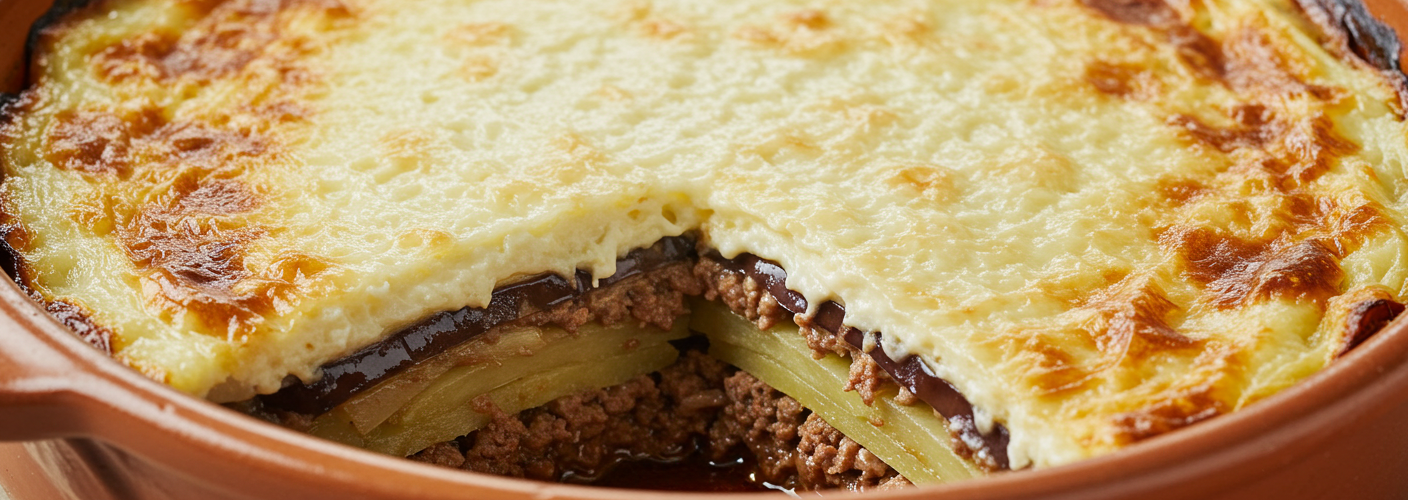Moussaka is a timeless dish that encapsulates the rich culinary heritage of the Mediterranean, with its layers of thinly sliced aubergine (eggplant), potato, and savory lamb, all crowned with a luscious bechamel sauce. This hearty casserole is not only a feast for the palate but also a beautiful representation of traditional cooking methods passed down through generations. Whether it’s enjoyed in a cozy home or a vibrant restaurant, moussaka brings the essence of Mediterranean dining to the table.
The Ingredients and Their Significance
At the heart of moussaka is its primary ingredient – aubergine. Known for its spongy texture and ability to absorb flavors, aubergine adds depth and richness to the dish. When thinly sliced and layered, it provides a tender contrast to the other components. Potatoes follow closely, acting as a reliable base that lends a comforting, hearty foundation to the mix. The combination of these vegetables not only contributes to moussaka’s texture but also offers a medley of nutritional benefits.
The meat, typically ground lamb, infuses the dish with irresistible umami flavor. Lamb is often chosen for its rich taste, which complements the vegetables beautifully. Some variations may use ground beef or a mix of meats, reflecting local preferences or dietary restrictions. The meat is usually cooked with onions, garlic, and a blend of spices, creating a savory filling that is essential to the dish’s character.
A cornerstone of moussaka is its bechamel sauce, a creamy mixture that binds the layers together. Made from a simple combination of butter, flour, milk, and seasonings, this sauce is generously spread on top before baking. Its velvety texture contributes a final flourish, ensuring that each bite is luxuriously smooth and creamy.
The Cooking Method
Creating moussaka involves a series of straightforward but vital steps. First, the vegetables must be prepared; aubergine is typically salted to reduce bitterness and moisture, while potatoes are blanched or precooked for optimal texture. The lamb is then sautéed with aromatic vegetables and spices, culminating in a fragrant filling.
Layering is perhaps the most crucial aspect of crafting moussaka. The process begins with a layer of potatoes, followed by the spiced lamb mixture, then the aubergine, and finally topped off with the creamy bechamel. This multi-layered construction not only creates visual appeal but also allows the flavors to meld beautifully as the dish bakes.
After being placed in a hot oven, moussaka transforms into a golden-brown masterpiece. Once baked, it must rest before slicing, allowing the layers to settle. This patience is rewarded with clean, defined layers that hold together when served.
Savouring Moussaka
Moussaka is best enjoyed warm, ideally paired with a crisp Greek salad or some fresh bread to complement the dish. With its hearty ingredients and indulgent flavors, this dish has become a staple in many Mediterranean communities and is beloved by those who enjoy the depth and richness of traditional cuisine.
Whether you’re preparing a dinner for family or entertaining guests, moussaka promises to impress and satisfy. Not just a meal, it’s an experience—a delicious journey through the Mediterranean that brings warmth and comfort to the dining table. When you take the time to craft this beloved dish, you’re not just cooking; you’re sharing a piece of culinary history that continues to unite people through the love of food.




Add comment